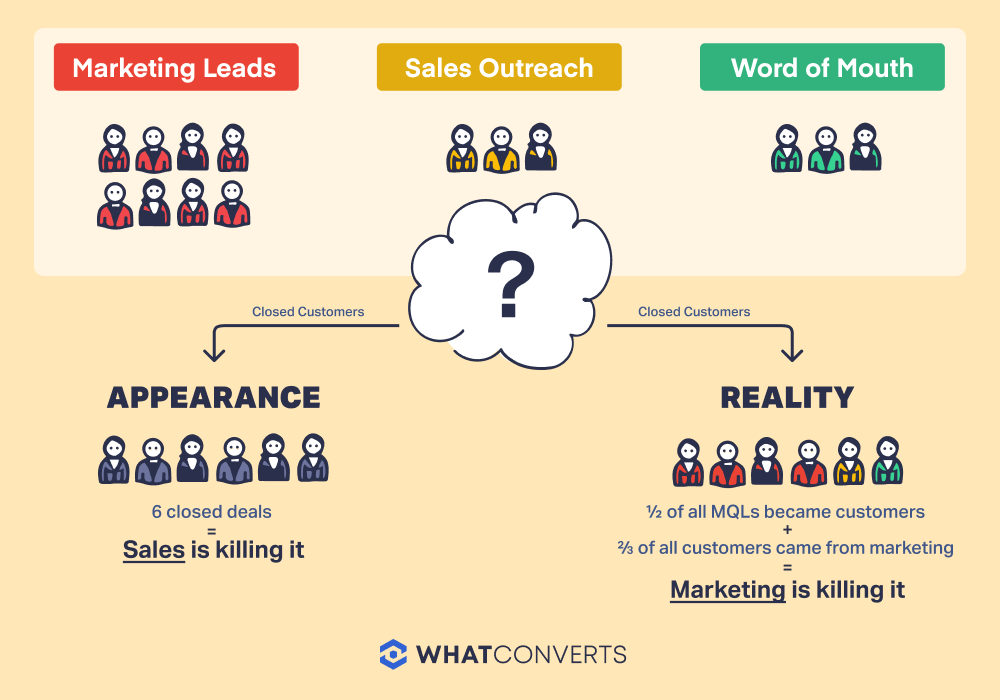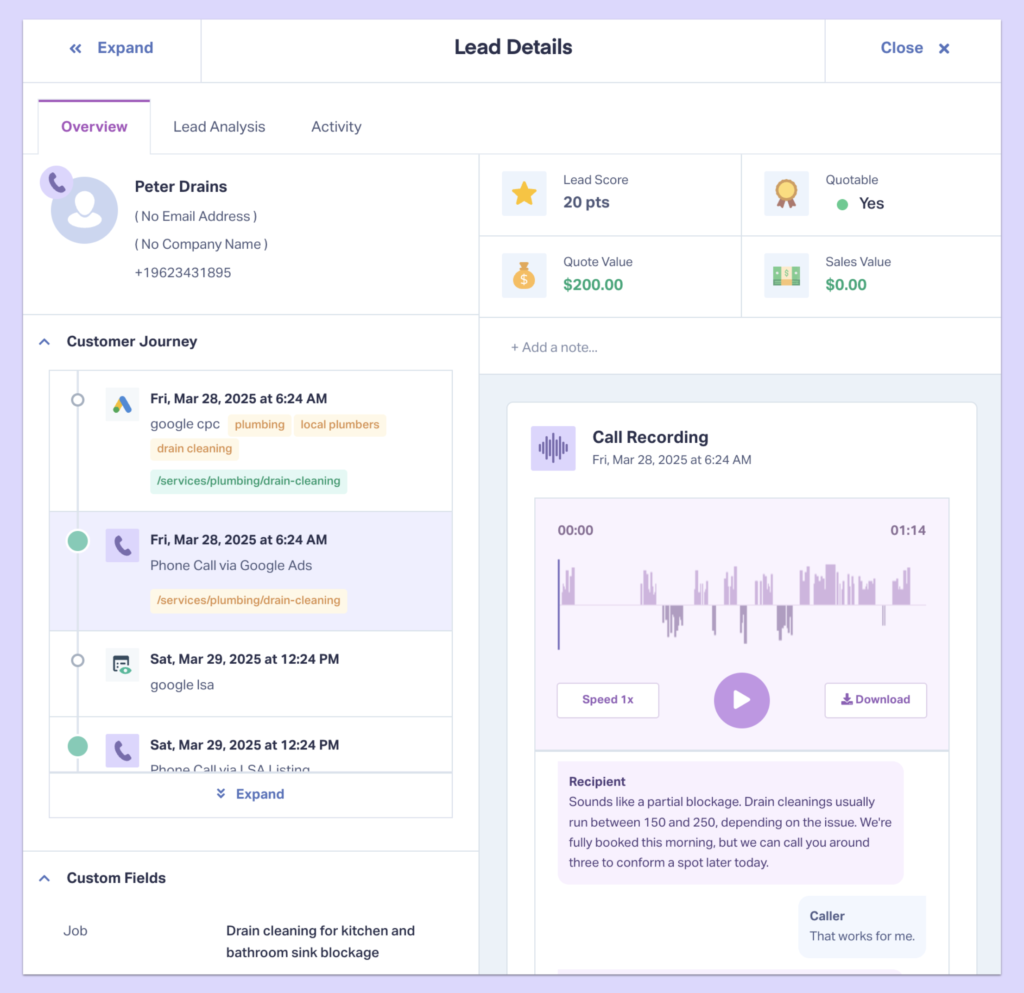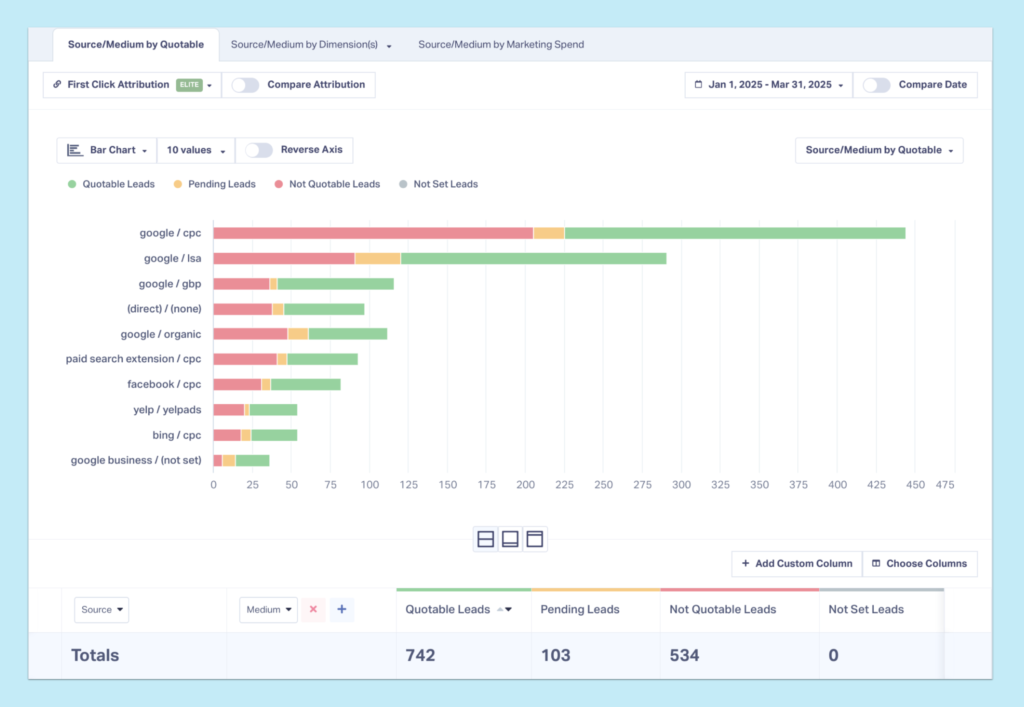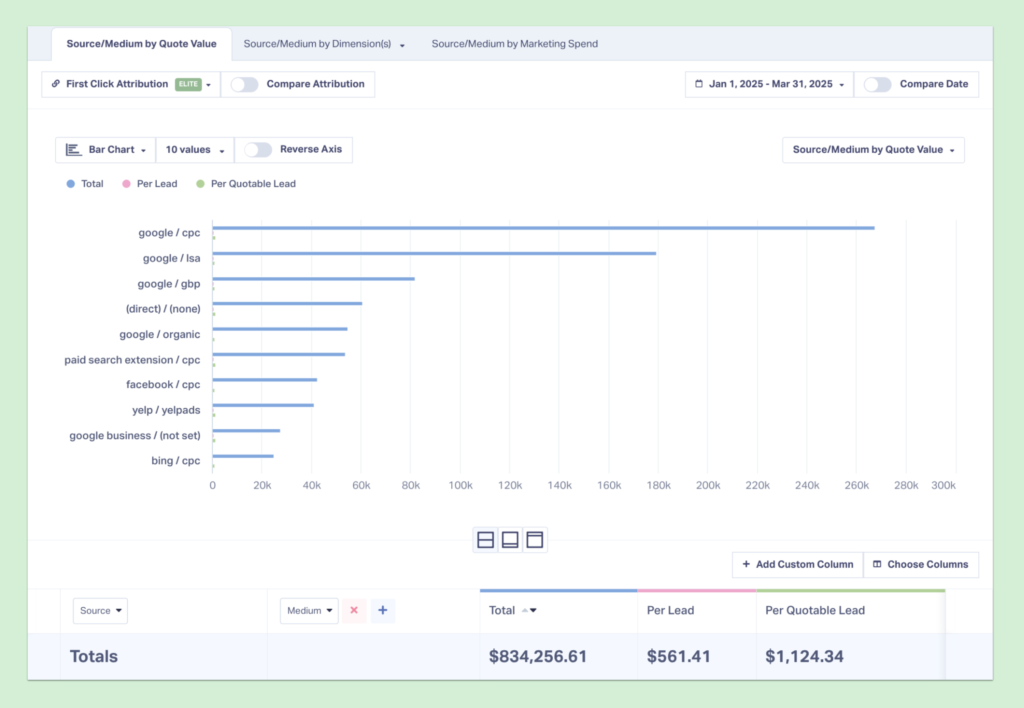
Sales can tell you exactly how much revenue they closed last quarter. Marketing usually can’t.
Both drive deals, but only one gets credit. The other is judged on activity (impressions, clicks, leads) because, when a lead shows up in the sales pipeline, it’s just marked “inbound”—the CRM can’t tell which marketing campaign brought them there. And activity doesn’t pay the company bills.
That disconnect is the revenue attribution gap—and it’s costing marketers credibility, budget, and growth.
But it’s not a lost cause. The key is connecting marketing efforts to the sales outcomes they actually influence.
The Problem: Marketing Drives Revenue It Can't Claim
Sales gets credit for a deal because the connection is direct. Lead comes in, salesperson works it, deal closes. Simple.
Marketing's path to revenue is messier:
- A prospect sees three Google Ads over two weeks
- They fill out a form after reading a case study
- Sales calls them, books a meeting, closes three months later
- The revenue shows up in the CRM under the salesperson's name
Where's the marketing attribution? The path from click to customer is full of handoffs—between ad platforms, forms, CRMs, and reports—and somewhere along the way, the connection breaks.
Which means when budget planning rolls around, marketing is defending spend instead of claiming wins.
The Missing Link: Proof of Marketing ROI
Marketing generates revenue. The problem is proving it.
When e-commerce runs ads, every dollar spent connects to every dollar earned. Click the ad, buy the product, revenue attributed. Done.
Lead generation companies don't get that luxury. The sale happens weeks or months after the lead comes in. Multiple touchpoints blur the path. And most critically, the systems that track marketing activity don't share data with the systems that track closed revenue.
Marketing needs to adopt a system that can track sales outcomes to the marketing campaigns they came from.
Until they do, they’re stuck reporting vanity metrics while sales reports actual money.
What Happens When ROI Is Invisible
When marketers can't see the ROI fruits of their labor, the consequences compound fast:
- Budget battles get harder to win. CFOs don't care about impression growth. They care about revenue per dollar spent. Without that number, marketing's budget request sounds like a cost, not an investment.
- Sales takes all the credit. When deals close, sales gets the commission and the recognition. Marketing generated the lead but can't prove it drove the revenue, so the contribution vanishes.
- Optimization becomes guesswork. If campaigns can't be tied to revenue, how do marketers know which ones actually work? They end up optimizing for lead volume instead of lead value—spending more on what looks good but delivers less.
The Solution: Close the Loop Between Leads and Revenue
For marketing to get credit for its generated revenue, you need to close the data gap between lead capture and deal closure.
This is the problem that WhatConverts was built to solve. Here’s how it works:
Step 1: A lead converts from a Google Ad and gets tracked.
Whether they call, fill out a form, or start a web chat, the lead conversion enters the WhatConverts system with all of their available personal and attribution data attached.
Here’s an example: our plumbing client just got a call from a potential customer named Peter Drains. He clicked on a Google CPC ad with the keyword “drain cleaning” that was part of a “plumbing - local plumbers” ad campaign.
Step 2: Qualify and value the lead based on available lead data.
Each lead that enters the platform is documented as a Lead Profile cataloguing all of the information available about the lead—their contact info, filled form fields, the call transcript, and the full customer journey including channels and keywords for each ad click.
The Lead Details screen shows us that Peter Drains:
- Clicked on a Google Ad for drain cleaning, which is a service our client offers
- Spoke with the sales rep and confirmed that the quote was within budget
- Confirmed on the phone that he’s in our client’s service region
With this information, we can mark him as a qualified lead.
We can also assign him a quote value of $200 (the middle of the quoted $150-$250 range) so that we can report not just that a qualified lead came from our marketing campaign, but a real estimate of how much revenue this MQL will bring in for our client.
Step 3: Report results with concrete evidence.
As more leads come in, we’ll continue to repeat this process of tracking, qualifying, and valuing each one. At the end of the quarter, we’ll have a record of every single qualified lead that was driven by one of our marketing campaigns, and we can use that record to build our reports.
With that data, we can take our quarterly report from “we generated lots of clicks, traffic, and impressions” to “we drove 742 qualified leads for a total quote value of over $830,000.”
First, we’ll generate a “Quotable Leads by Source/Medium” report that shows exactly how many leads came from each of our efforts. We can also do this by keyword, campaign, channel, and so on.
Then, because we logged the quote values for each of our qualified leads, we can also report exactly how much value in dollars our campaigns generated.
Now you’re speaking in terms your clients and bosses actually understand—and what they understand is that the marketing team is driving tons of value for the company’s bottom line.
What Revenue Attribution Unlocks
When marketers can prove revenue impact, three things change:
- Budget conversations flip from defense to expansion. Instead of justifying spend, marketers show return and request more investment in what's working.
- Optimization becomes revenue-focused. Campaigns get refined based on which ones drive paying customers, not which ones generate the most clicks.
- Marketing gets recognized as a growth driver. When leadership sees clear revenue attribution, marketing earns a seat at the revenue strategy table.
Ready to prove marketing's revenue impact and stop fighting for budget?
Start your free 14-day trial of WhatConverts today or book a demo with a product expert to see how we help prove and grow your ROI.
Get a FREE presentation of WhatConverts
One of our marketing experts will give you a full presentation of how WhatConverts can help you grow your business.
Schedule a Demo
Grow your business with WhatConverts









